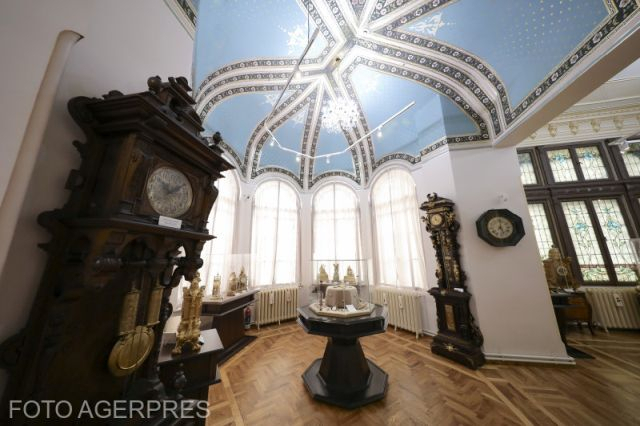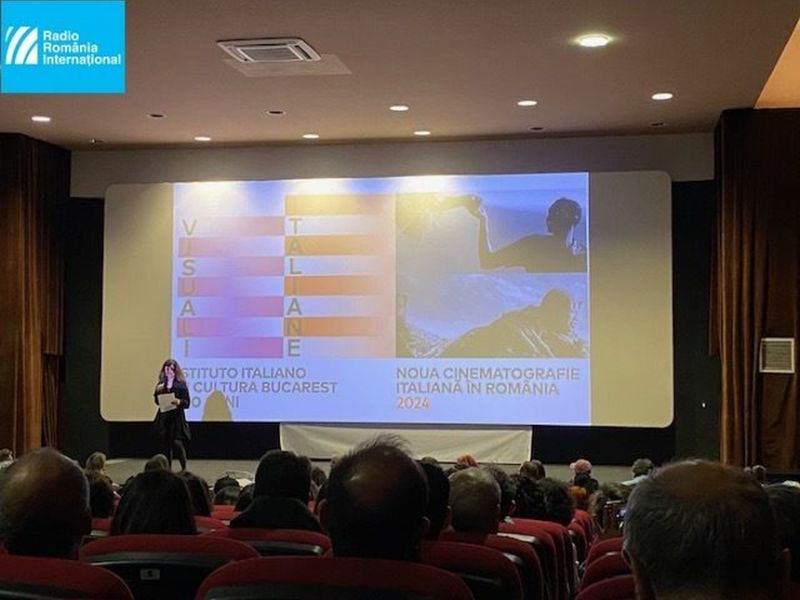Romania and its precious heritage
The Clock Museum
Warning: Trying to access array offset on null in /home/web/rri.ro/public/wp-content/themes/rri/template-parts/content.php on line 53

Warning: Trying to access array offset on null in /home/web/rri.ro/public/wp-content/themes/rri/template-parts/content.php on line 98
Ion Puican,
03.04.2021, 14:00
The town of Ploiesti is located 60 kilometers from
Bucharest. One of the town’s most beautiful buildings plays host to the
Nicolae Simache Clock Museum. We paid a visit to that little precious area,
under the guidance of the curator of the museum, Carmen Banu.
We’re in the ‘Nicolae Simache’ Clock
Museum of Ploiesti, a museum founded in 1963, thanks to Emeritus History
professor Nicolae Simache, who, in his capacity as director of then the
Ploiesti Regional History Museum, created 18 museum sections, among which the
Clock Museum, which, of the string of those cultural institutions, seems to have
been closest to his heart. It is an architectural gem, it is a building erected
in the late 19th century, for then the prefect of Prahova county, Luca
Elefterescu, a conservative politician and the very head of the Conservative
Party of that time, a magistrate but also a businessman in the oil industry.
It is one of the most beautiful houses in the southern area of the town, at
that time the residential area of Ploiesti, built in the neo-Romantic style..
Carmen Banu about the collection of the museum and its beginnings:
The Clock Museum in Ploiesti has an
extremely precious collection. Pieces have been purchased beginning 1954. In
1955, the first wall clocks were purchased, the so-called Transylvanian clocks,
which later turned out to have been manufactured in Germany, yet they were
available in houses around Transylvania. The collection was enriched when a
batch of 55 clocks was purchased, part of the collection of the famous
clockmaker from Bucharest, Sebastian Sașa. Hence the idea of founding the Clock
Museum of Ploiesti. A lot of purchases have been made and today the collection
boasts around 4,000 pieces, with 500 of them being exhibited in the temporary
exhibition, they are of course the most representative pieces of the collection. Time
measurement evolution is being illustrated, from the solar dials, sandglasses,
water clocks, to wristwatches manufactured in the first half of the 20th
century. Our collection has exceptional clocks, such as clocks manufactured in
the Renaissance style, in the mid -16th century, in France and
Germany, respectively. The oldest of them is a clock manufactured in Blois, in
1544, by Jakob Acustodia, an horologer of those times. It is one of the pieces de resistance, maybe the most important piece in our collection.
Another extremely valuable piece is the clock manufactured in 1562 by Jeremias
Metzker, a famous horologer from Germany, it is a limited-series clock as three
of them made by Jeremias Metzker are known around the world, the one which is
part of the Clock Museum collection seems to be the oldest in this series.
Carmen Banu about the exhibits displayed the museum’s first hall:
As a novelty, in this hall, returning
to the first time measuring tools, we have a water clock. It appears no such
clock can be found in similar collections. Torch clocks were first manufactured in England, in the 17th century and because they were very successful,
they were manufactured until the 19th century. Our collection has
two such clocks as well, their name is derived from the semblance with the
torches of that time.
Curator Carmen Banu also showed us around the museum and took us to the big clocks’ hall.
The second hall plays host to the clocks
of the 18th and the early 19th century. Here,
attention-grabbing thanks to their dimensions, but also thanks to their beauty,
are, of course, the parlor pendulums of the 18th century. By all
means, drawing our attention in this area are the pocket watches, the collection’s
oldest, manufactured from the late 17th century until the early 19th
century – watches made by English, French, Swiss clockmakers. The Clock Museum
Heritage is also comparable to the heritage of museums in Germany, Switzerland,
the United States. The famous clockmaker Abraham Louis Breguet manufactured
watches especially for Turkey and in the Topkapi museum some of his works are
on display as well. He is arguably the most famous clockmaker of all time and
our collection also boasts clocks made by Breguet.
The third hall has pocket watches on display, that
were property of historical personalities.
Carmen Banu:
The jewel pocket watches on display in
the third hall are watches manufactured in the 19th and the 20th
centuries, which, apart from their technical qualities, do have special artistic
qualities, through the minuteness of the decorative patterns, there are also
watches that belonged to several personalities of Romania’s cultural and
political life. I should like to start with King Carol I watches, we have
two watches that were part of his collection. In our collection we can also
find gift watches, among them, a watch offered as a gift by a Romanian woman
who settled in Switzerland, it is a watch that had been property of Tsar
Alexander the 2nd and in 1922 the lady offered the watch as a gift
to the Clock Museum in Ploiesti. As for the wrist watches, we have diplomat
Nicolae Titulescu’s watch on display, it is a watch made by LeCoultre Manufacturers
in 1931, we’re speaking about the famous Reverso model created by that firm.
There are also other watches, extremely beautiful, part of the same series,
there are curiosity watches, watches enchased in a pince-nez, there’s also a
watch with masonic insignia.
We’re taking the final round of our tour, getting our kicks out of seeing the popular clocks on display. This time, Carmen Banu is introducing the popular clocks to us.
The mantelpiece clocks are well
represented in the collection, these are mainly French-made clocks, their
decorative patterns are inspired from the periods when they were created, with
the gilded bronze as the main material. We’re now moving on to another category
of clocks of a popular nature, the wall clocks, those were clocks mainly
manufactured in Germany, in the Black Forest area, and pride of place hold the
cuckoo clocks. Apart from the pocket watches that used to be property of
remarkable personalities, the museum’s collection also has clocks that belonged
to several Romanian authorities, table clocks, wall clocks, and I should like
to open this series with the watch that belonged to ruling prince Alexandru
Ioan Cuza – a watch with an astronomical mechanism, which displayed calendar
data, solstice and equinox days, the leap years. Added to that are the watches that
belonged to the political personality of Mihail Kogălniceanu, to writer Duiliu
Zamfirescu, painter Theodor Aman, poet George Coșbuc – it is at least these
names that are worth drawing visitors so that they can see for themselves those
special objects. At the time of the pandemic, we’re awaiting out visitors in a
safe and beautiful area, in an area which is unique in its kind.





























